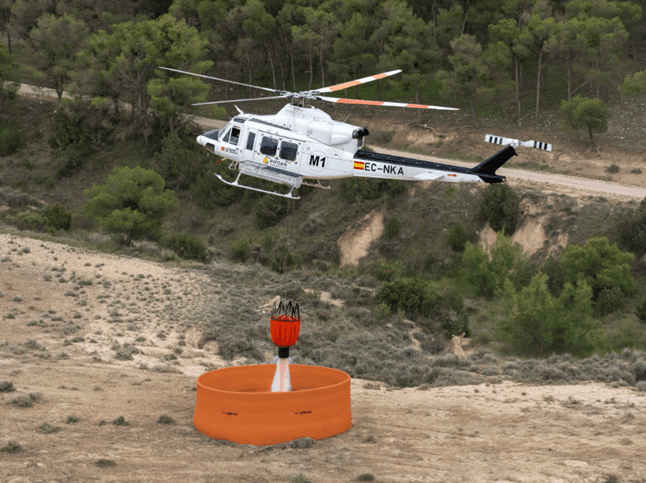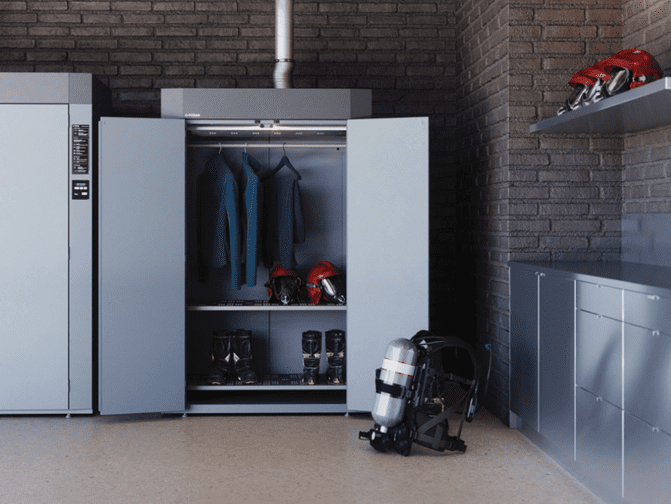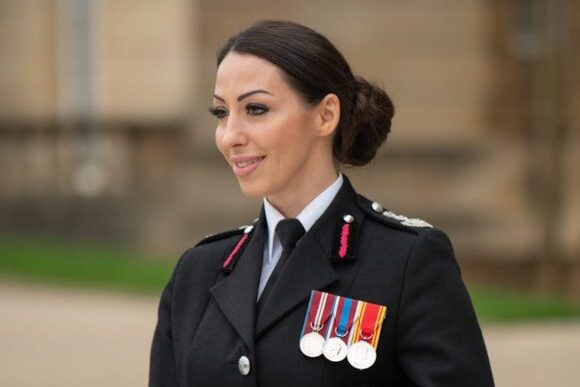Jon Laerdal, Managing Director of Laerdal Medical, the company that created Resusci Anne, the famous resuscitation mannequin, takes a look at the evolution of CPR & AEDs
According to the American Heart Association nearly 383,000 out-of-hospital Sudden Cardiac Arrests (SCAs) occur annually.[1] In the UK approximately 30,000 people suffer a cardiac arrest outside hospital and are treated by emergency medical services (EMS) each year.[2]
SCA is an abrupt loss of pulse and consciousness caused by an unexpected failure in the heart’s ability to effectively pump blood to the brain and around the body. It is usually caused by life-threatening arrhythmias, abnormalities in the heart’s electrical system. The SCA victim first loses his or her pulse, then consciousness and finally the ability to breathe. In a cardiac arrest, the heart simply loses its normal rhythm and can go into ventricular fibrillation (VF), which can happen in a few seconds. Without immediate treatment, 90-95% of SCA victims will die.[3]
CPR is the most effective method of keeping a victim of cardiac arrest alive long enough for treatment to be delivered. However, the only definitive treatment for SCA is defibrillation – an electric current that ‘shocks’ the heart so that a normal rhythm may resume. On average, fewer than 8% of people who experience an out-of-hospital cardiac arrest survive. However, survival from a SCA can be greatly improved if a bystander has access to an AED quickly [4]. If a shock from a defibrillator is passed through the heart within two to three minutes, the patient’s chances of survival will be increased by over 50%.
As CPR and defibrillation didn’t come from nowhere, it’s worth retracing their formative years to help us understand current practices and outline how fire-fighters, as first responders use CPR and defibrillation to save lives on both sides of the Atlantic.
Background to CPR
It may be surprising to learn that CPR is a young science. It was only in 1956 that US Chiefs of Anesthesiology, Dr. Peter Safar and Dr. James Elam conducted research studies, which confirmed that life-saving resuscitation could be performed with expired air by mouth-to-mouth ventilations. The problem that lay in its application was how to train people in this skill.
In 1958, Dr. Peter Safar presented his findings at a conference of Scandinavian anaesthesiologists in Gausdal, Norway, also attended by Bjorn Lind from Stavanger Hospital (Laerdal’s home town). Aware of the difficulties of training this mouth-to-mouth skill, it struck Lind that Stavanger’s own publisher and toymaker, Asmund Laerdal, should go to the US to meet with Safar to discuss the making of a mannequin.
Laerdal applied all his efforts to making a complete CPR training mannequin for use to practice artificial ventilation and external chest compressions. The result was Resusci Anne. Her story is inextricably linked to the birth of modern resuscitation and her legacy continues to inspire Laerdal Medical’s mission of ‘helping save lives’. To date, it is estimated that 400 million people worldwide have been trained in CPR on this iconic mannequin.
Laerdal continues to set industry standards with the new Resusci Anne QCPR and Resusci Baby QCPR mannequins, which now facilitate the means to measure and assess the quality of CPR with meaningful feedback that guides continuous improvement and retention of this critical skill. These three values now define the range of Laerdal’s CPR training and therapy solutions and the company’s commitment to support all healthcare professionals who work in the field of resuscitation and non-clinical personnel who may witness a SCA.
Background to AEDs
Even though the effect of electricity on muscle tissue was known in the eighteenth century its benefits to the human heart weren’t discovered until much later. The first successful (open) human defibrillation was performed by Claude Beck in 1947 on a 14 year old boy who went into VF during surgery. It took until 1979 before the first portable AED was developed.
AEDs are lightweight, portable devices that deliver an electric shock through the chest to the heart and are easy to operate for someone with no medical background. The shock from an AED can stop irregular rhythm and allow a normal rhythm to resume in a heart during a SCA. Modern AEDs are small, compact machines that automatically analyse the casualty via special pads stuck to their chest. The AED will advise on suitable action through easy to follow voice prompts. If the pads are applied to someone who is not in cardiac arrest the AED will recognise the electrical rhythm and prevent a shock from being administered.
Time to first shock is the most important factor to consider in order to improve the chances of recovering from a SCA. With this in mind, the long standing partnership between Laerdal and Philips has resulted in innovative solutions to improve the outcome for the SCA patient by supporting the emergency responder and general public with easy-to-use defibrillators that harness both companies’ respective expertise in quality CPR delivery and ‘Quick Shock’ technology. Philips’ FRX and FR3 defibrillators have been designed to significantly reduce deployment time by eliminating steps to help start the delivery of the right therapy, CPR or defibrillation and are familiar equipment on fire engines globally.
Use of AEDs in the United States
In the United States, all 50 states and the District of Columbia now include using an AED as part of their Good Samaritan laws. The Cardiac Arrest Survival Act of 2000 encourages placement of AEDs in federal buildings and ensures federal liability protection for those who acquire or use an AED to help save a life. In addition, this act provides limited immunity to persons using an AED and the purchaser of an AED. These acts vary by state, but generally, they limit the liability of rescuers using AEDs and others involved in the AED programme.[5]
US fire-fighters
The fire service has formally been part of the 911 emergency care delivery system since EMS began in the late 1960s. Many of the original pre-hospital EMS providers were fire-fighters, who had ‘special’ additional training to provide medical services during emergencies that occurred outside the hospital. [6]
Of the 200 largest cities in the United States, 97% have fire service-based pre-hospital 911 emergency medical response. According to the IAFF/IAFC Fire Operations Survey in 2005 the fire service provides advanced life support (ALS) response and care in 90% of the 30 most populated US jurisdictions.
All fire-fighters in the United States are trained in CPR and a great many fire engines carry AEDs.[7]
Use of AEDs in the United Kingdom
Both the British Heart Foundation (BHF) and the Resuscitation Council of UK (RCUK) recommend the use of AEDs and are working very hard to promote greater access for the general public. But their use is still not as prevalent in the UK as it is in America. One reason for this is because there is no mandatory requirement to locate AEDs in public places unlike the US where several states require AEDs to be placed in schools, health clubs, day care centres, places of public assembly and swimming pools[8]. Another reason cited by Dr Andrew Lockey of RCUK is that “people in this country don’t know how to do CPR and the most common reason why people don’t do anything is the fear of doing harm.”[9]
But through public awareness campaigns such as the BHF Nation of Lifesavers campaign and RCUK’s free Lifesaver interactive film (www.life-saver.org.uk) and apps for mobiles and tablets, people are becoming more confident in CPR and using AEDs in the UK.
UK fire-fighters
The UK fire service is currently in a time of change, reflected in a report published in May 2013 entitled ‘FACING THE FUTURE: Findings from the review of efficiencies and operations in fire and rescue authorities in England’ by Sir Ken Knight.
In the report, Sir Ken has recommended that changes could be made at the national level to enable greater collaboration with other blue-light services, including through shared governance, co-working and co-location and these would unlock further savings.
It is interesting to note this report echoes what was previously stated in a Government White Paper on the fire service in June 2003. The White Paper stated; ‘Public services usually work best when they work together. In dealing with emergencies, the public rightly expects the police, fire and ambulance services to work closely with each other and with other agencies. For example, the Government wants to see co-responder partnerships developed and implemented more widely. Under these arrangements, fire fighters, when they are the first on the scene at an emergency, are trained and able to use basic life-support skills, including the use of automated defibrillators, to keep casualties alive until professional medical assistance arrives’.[10]
But there is still no statutory requirement for the UK fire services to carry AEDs. However some fire services have placed AEDs on board fire vehicles and this is becoming increasingly prevalent. For example prior to the terrorist bombings in London on July 7 2005, the London Fire Brigade had started reviewing its first aid kits, procedures and training and was considering carrying AEDs. After the bombings it was decided that every fire engine in London would be equipped with defibrillators. Now all London fire-fighters have been trained to use the equipment so they can treat people when they are the first emergency service to arrive at a scene, or when patients are hard to reach.
It is still the case though that the core competency of the fire service in the UK is on rescue. Compare this to the ambulance service where its expertise has evolved in treating medical emergencies with trained paramedics/EMTs on board emergency vehicles. In the UK if someone is suffering from a heart attack or suspected cardiac arrest, an ambulance will be despatched.
Fire-fighters in the US are first responders to medical emergencies, including cardiac arrests. US fire-fighters comprise the basic emergency response infrastructure for all hazards, including medical emergencies.
US fire-fighters and their counterparts in the UK have always been and remain at the forefront of saving lives. Their expertise in treating SCA is like CPR and AEDs, evolving to the betterment of citizens in both countries.
References
[1] American Heart Association website CPR statistics
[2] Resuscitation Guidelines 2010, Resuscitation Council UK
[3] http://www.suddencardiacarrest.co.uk/sudden-cardiac-arrest/index.htm
[4] Centers for Disease Control and Prevention ‘A Summary of Public Access Defibrillation Laws, United States, 2010’ http://www.cdc.gov/pcd/issues/2012/11_0196.htm
[5] AED Implementation Guide, American Heart Association 2012
[6] Prehospital 9-1-1 Emergency Medical Response: The role of the United States Fire Service in Delivery and Coordination Whitepaper 2007
[7] International Association of Fire Fighters
[8] AED Implementation Guide, American Heart Association 2012
[9] http://www.itv.com/news/2013-02-07/tonight-how-to-save-a-life/
[10] Our Fire and Rescue Service White Paper June 2003









